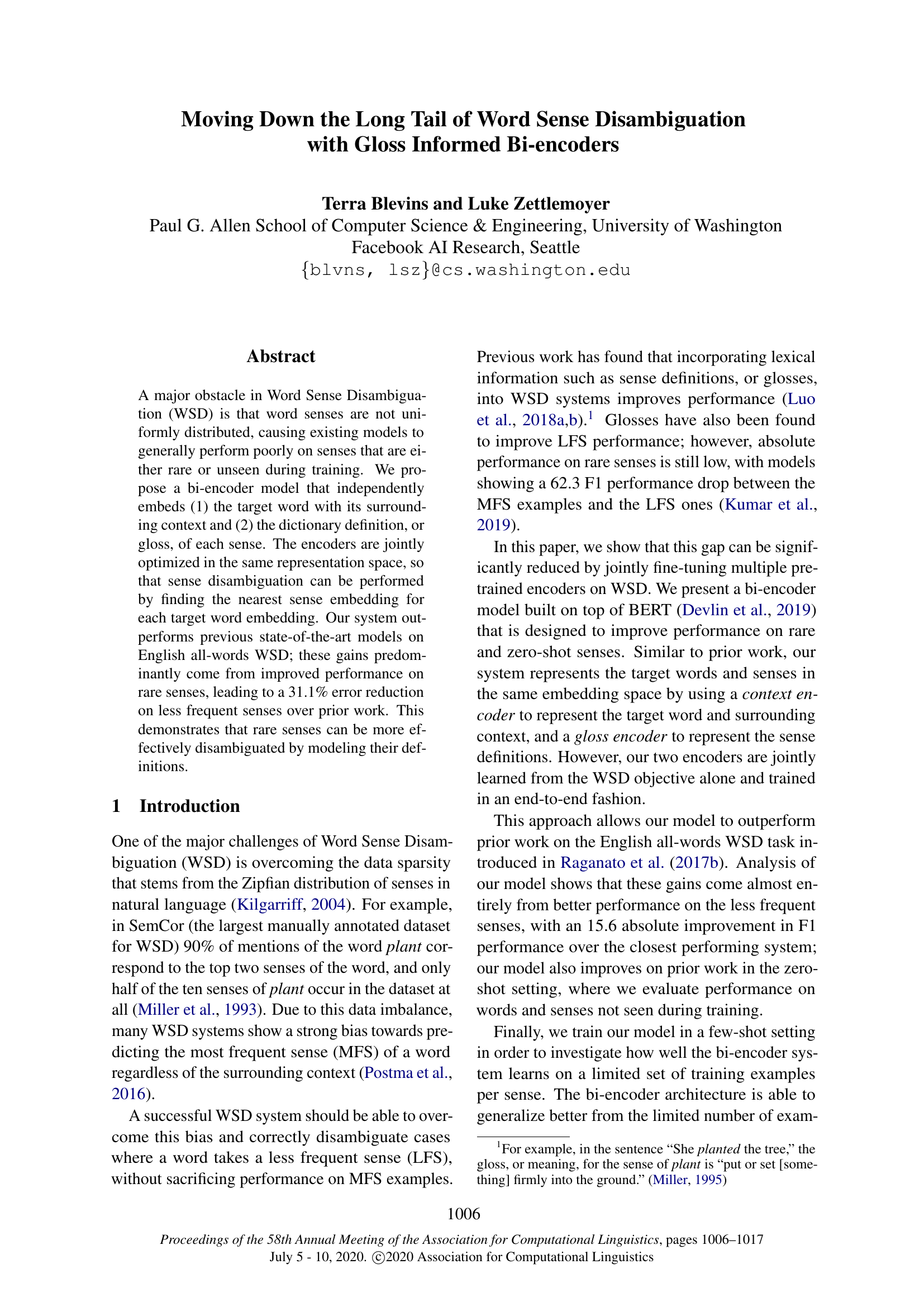Command Palette
Search for a command to run...
Moving Down the Long Tail of Word Sense Disambiguation with Gloss Informed Bi-encoders
{Luke Zettlemoyer Terra Blevins}

Abstract
A major obstacle in Word Sense Disambiguation (WSD) is that word senses are not uniformly distributed, causing existing models to generally perform poorly on senses that are either rare or unseen during training. We propose a bi-encoder model that independently embeds (1) the target word with its surrounding context and (2) the dictionary definition, or gloss, of each sense. The encoders are jointly optimized in the same representation space, so that sense disambiguation can be performed by finding the nearest sense embedding for each target word embedding. Our system outperforms previous state-of-the-art models on English all-words WSD; these gains predominantly come from improved performance on rare senses, leading to a 31.1{%} error reduction on less frequent senses over prior work. This demonstrates that rare senses can be more effectively disambiguated by modeling their definitions.
Benchmarks
| Benchmark | Methodology | Metrics |
|---|---|---|
| word-sense-disambiguation-on-supervised | BEM | SemEval 2007: 74.5 SemEval 2013: 79.7 SemEval 2015: 81.7 Senseval 2: 79.4 Senseval 3: 77.4 |
Build AI with AI
From idea to launch — accelerate your AI development with free AI co-coding, out-of-the-box environment and best price of GPUs.